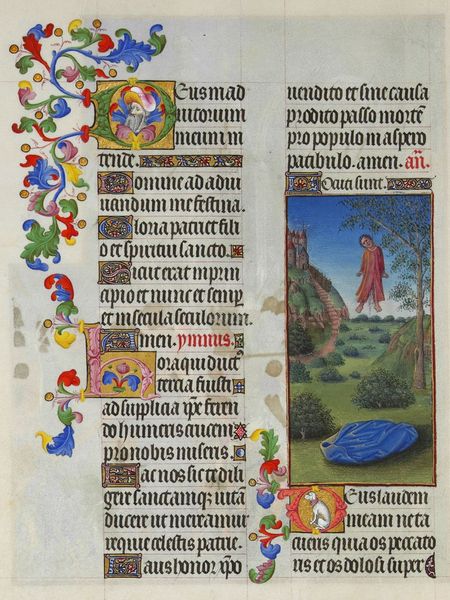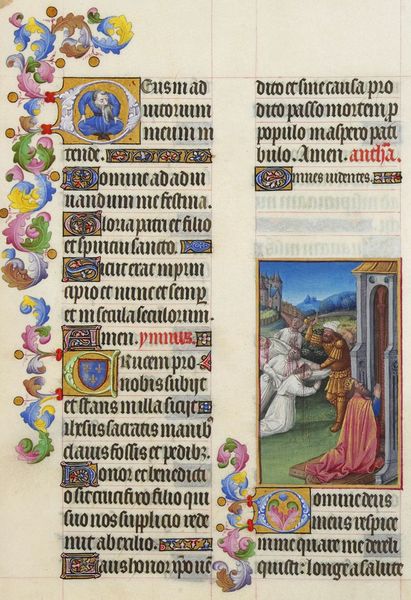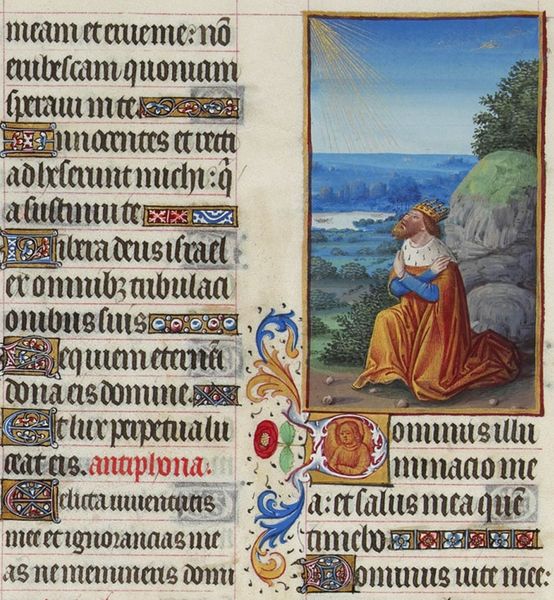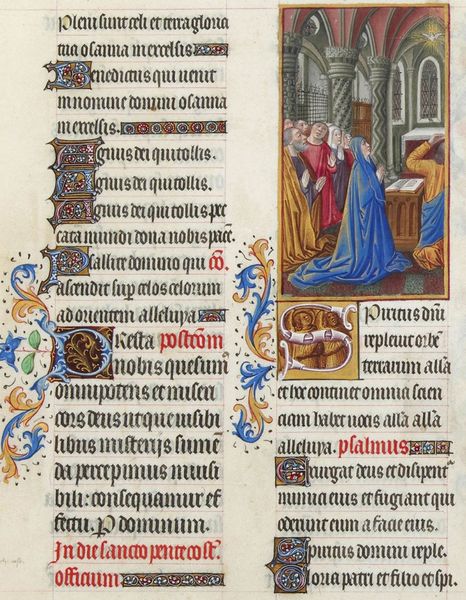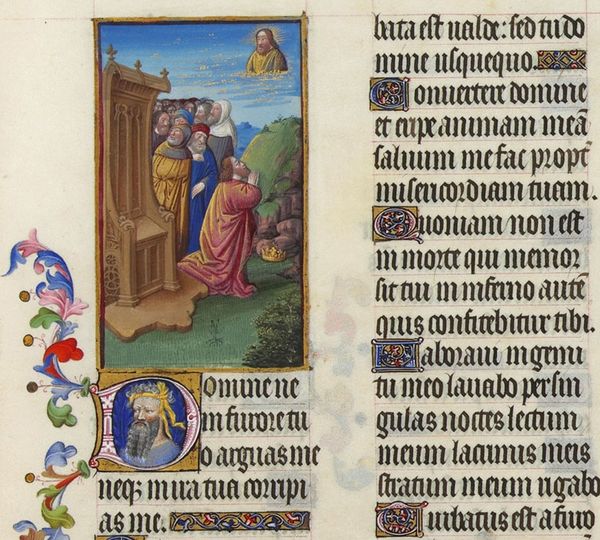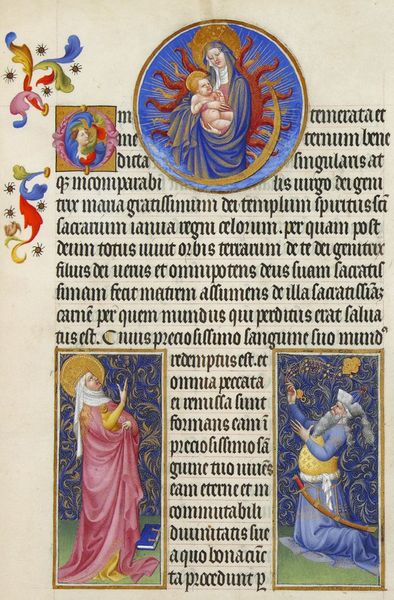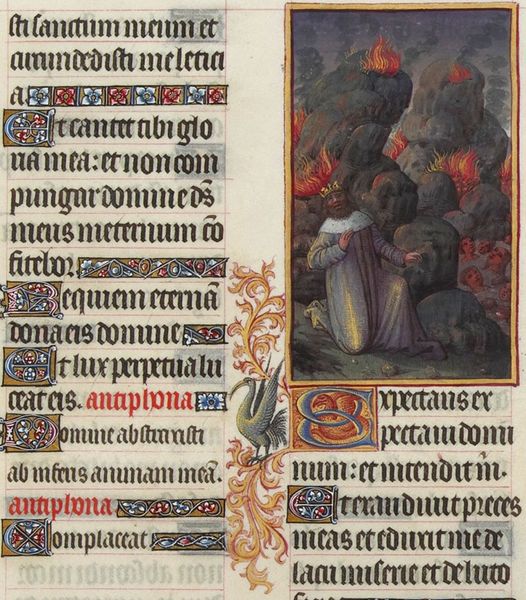
painting, watercolor
#
portrait
#
medieval
#
water colours
#
narrative-art
#
painting
#
figuration
#
text
#
personal sketchbook
#
watercolor
#
coloured pencil
#
international-gothic
#
mixed media
#
miniature
Copyright: Public domain
Curator: Here we have a page from what is believed to be a Book of Hours, specifically "Psalm LVI," likely crafted by the Limbourg brothers. You’ll note the miniature painting on the right, juxtaposed with highly ornate text. Editor: Oh, wow, talk about intricate! My first impression? It feels so delicate, like a perfectly arranged garden made of paper and paint. The blue in that tiny painting is practically glowing! It's the colour of dreams. Curator: Indeed. These brothers were masters of the International Gothic style, a period of extreme refinement and detail. Look at the stylized figures in the painting, and the illuminated letters bordering the text. Consider also the historical context – liturgical books like these were status symbols, expressions of wealth and piety for the aristocracy. Editor: Right, so, it’s a bit like the medieval version of bling? Except, instead of diamonds, you had master artists using pigments from all over the world to depict scenes of devotion? I do adore the use of blues, yellows, and greens; how natural the integration feels... it makes one pause to meditate. Curator: Precisely. These manuscripts reflect both spiritual aspirations and the patrons' social positioning. That shade of blue, likely ultramarine, derived from lapis lazuli, was more expensive than gold! It reinforces the elite status tied to owning such an object. The Psalm itself focuses on seeking divine protection. It becomes a very material prayer when visualized in such luxury. Editor: Hmm, interesting point! I'd like to think that someone at least appreciated the intention of artistic craftsmanship and also found genuine comfort in this visual harmony, despite the price! Look at the figure kneeling –there's an emotional vulnerability to him that the richness kind of amplifies. Art serving not just luxury but inner searching! Curator: That interpretation resonates with broader understandings of Medieval religious practices. While acknowledging this manuscript's history as a social and economic symbol, we also ought to remember that devotion and hope were significant facets of late Medieval life. Editor: Well said. It is good to keep things in perspective and avoid getting too deep in social context sometimes. Let's agree that whether meant to show wealth or express faith, the artistry on display here definitely stirs up a response, centuries later.
Comments
No comments
Be the first to comment and join the conversation on the ultimate creative platform.





